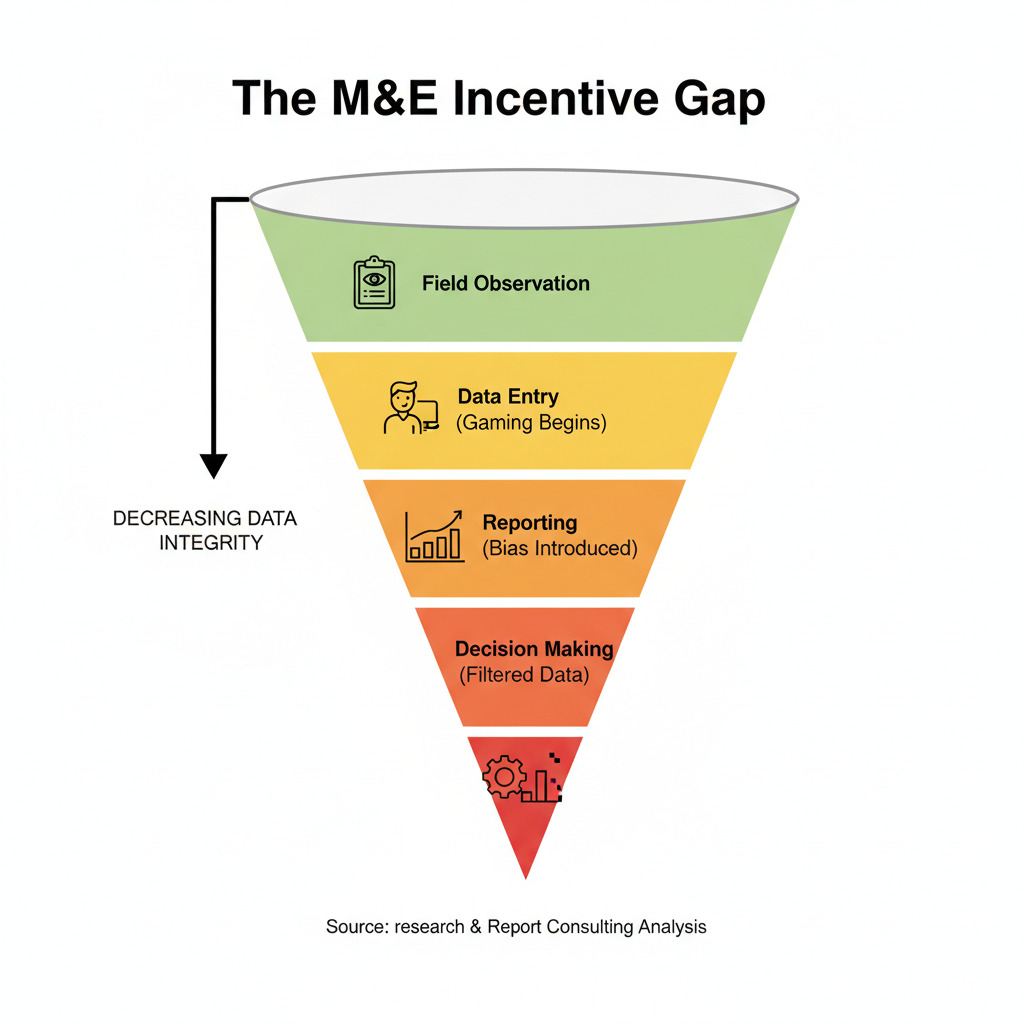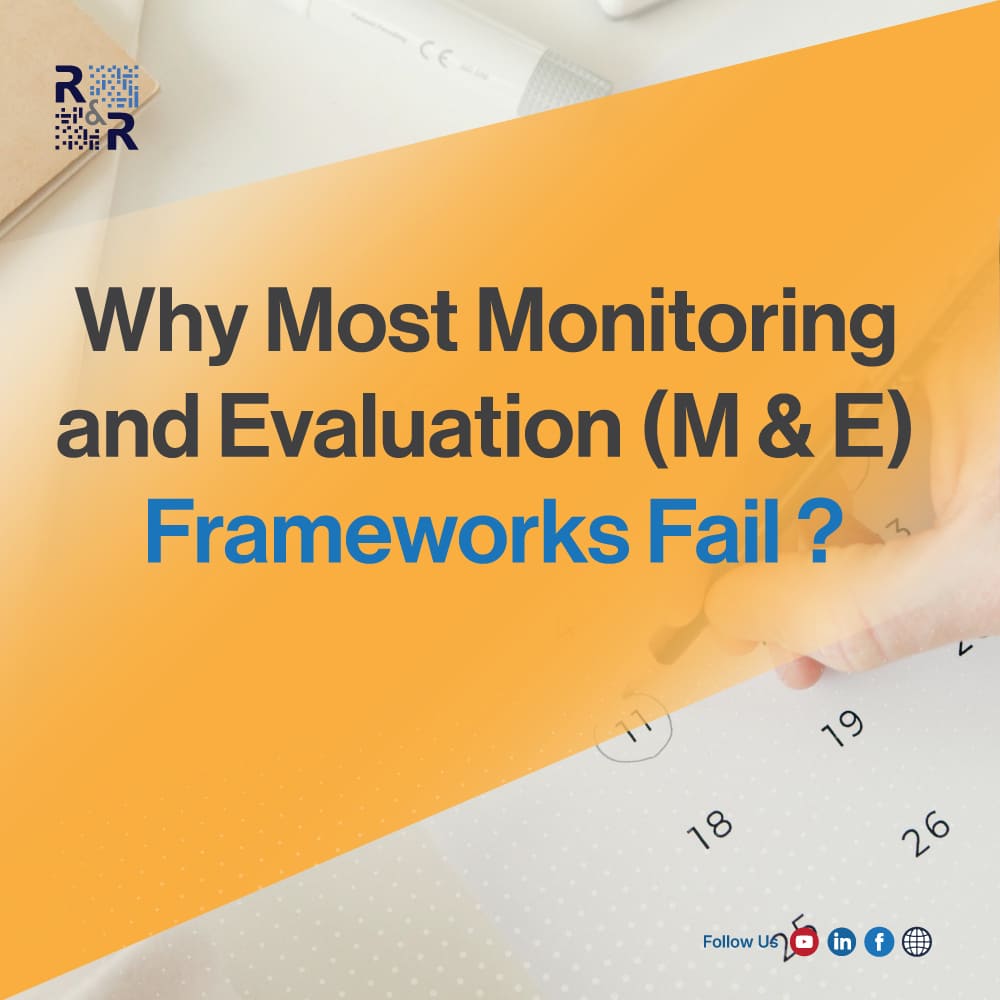Standard M&E frameworks fail constantly. Most consultants cite weak indicators or poor baseline data. They are wrong. Framework collapse occurs outside the technical manual. The true flaws are organizational, political, and behavioral. We identify the four critical failures that most researchers miss entirely.
1.The Political Economy of Perverse Incentives
Monitoring and Evaluation systems exist for compliance. They rarely prioritize genuine learning. Staff incentives often punish honest reporting. The organizational structure rewards consistent, reported success. This dynamic creates powerful perverse incentives across the system.
Gaming the Indicators
Field teams become masters of indicator manipulation. This is not poor measurement; it is rational behavior. Employees game the metrics to secure their job and project funding. They prioritize the appearance of success over factual accuracy. Crucially, the system rewards these reporting outcomes. This structural issue confirms failure is inevitable. M&E systems fundamentally become expensive exercises in organizational self-deception.
2.The Critical Data-to-Action Chasm
Frameworks meticulously define data collection points. However, they neglect the critical component of data utility. Volume of data does not equal actionable intelligence. The problem is not collecting data; it is synthesizing it effectively.
Prioritizing Collection Over Utilization
Decision-makers face information overload every day. A traditional M&E report often presents hundreds of data points. This creates immense cognitive friction for busy executives. The data fails to integrate into the strategic planning cycle. This data-to-action chasm is the final mile of M&E failure. Data must be timely, simple, and directly relevant. If the synthesized findings do not inform a budget decision, the framework is irrelevant. Evidence use depends entirely on organizational culture and data packaging.
3.The Cognitive Overload Trap in M&E
Over-engineered frameworks destroy efficiency. They impose an overwhelming burden on implementing staff. These teams already struggle with resource scarcity. The framework’s complexity creates significant opportunity costs. Staff spend more time reporting than delivering impact.
The Tyranny of Too Many Indicators
Complex frameworks often demand tracking 50 or more indicators. This forces staff into a “checkbox M&E” mentality. Teams rush to meet reporting deadlines. The quality of data plummets immediately. They prioritize procedural compliance above deep, qualitative inquiry. Lean M&E approaches offer a superior alternative. We must drastically reduce the number of required data points. Instead, focus on a few high-value, utilization-focused indicators.
Ignoring the Tacit Knowledge System
Most systems treat M&E as an audit function. Data flows one way: from the field up to the headquarters. This design ignores valuable local insights. It fails to build effective feedback loops.
The Power of Informal Learning Loops
Frontline staff hold immense tacit knowledge. This is unwritten, experiential insight. Field teams use this informal system to adapt projects daily. M&E frameworks must deliberately capture and integrate this knowledge. True success relies on fusion. We must merge the formal M&E structure with the robust, adaptive learning systems already operating. This shift defines effective Adaptive M&E. It moves the organization from passive monitoring to active, iterative learning.

References: Critical M&E Insights
- On Gaming Indicators and Perverse Incentives: OECD’s Work on M&E and Incentives
- On Data Utilization and the Last Mile: ODI’s Research on Evidence-Informed Policy Making
- On Adaptive Management and Tacit Knowledge: USAID’s Collaboration, Learning, and Adapting (CLA) Toolkit
Conclusion: Shifting Your M&E Focus
M&E is not a technical toolset; it is a management philosophy. Frameworks do not fail because of poor design. They fail because of organizational resistance and misaligned incentives. Your consulting partner must understand the political economy of data.
At Research & Report Consulting, we design systems that succeed. We leverage actionable intelligence, not just compliance data. We embed learning loops at every level.
Which of these four failure points—Incentives, Data Chasm, Overload, or Tacit Knowledge—is currently the most destructive factor within your organization’s projects? Share your expert view below.

